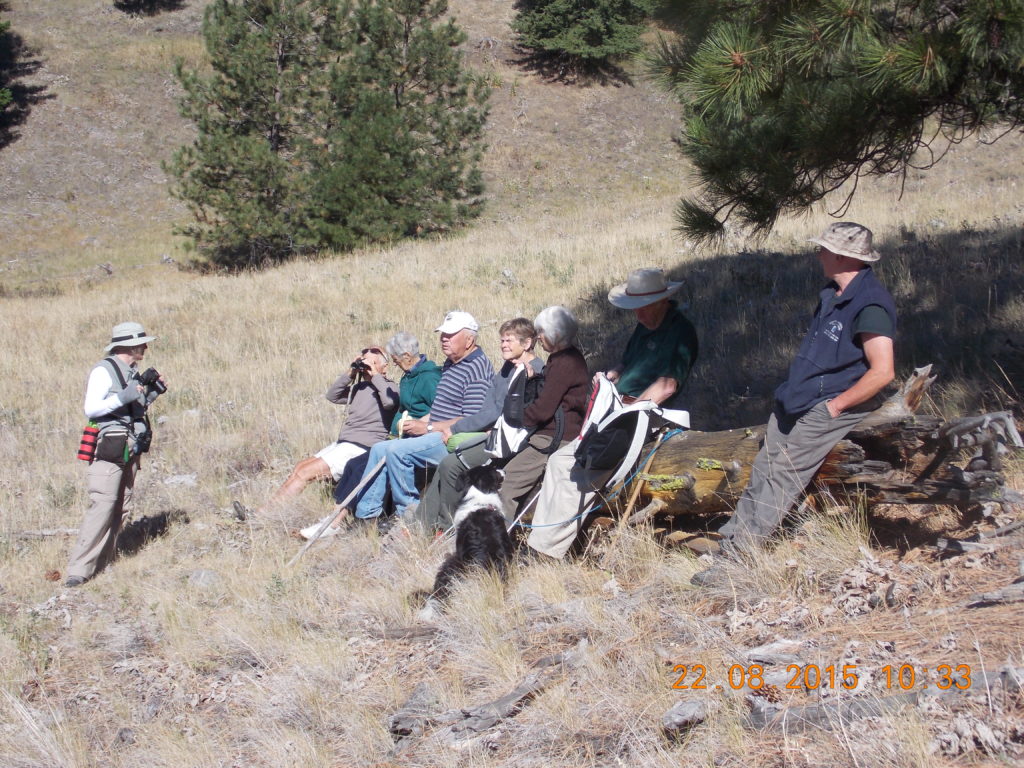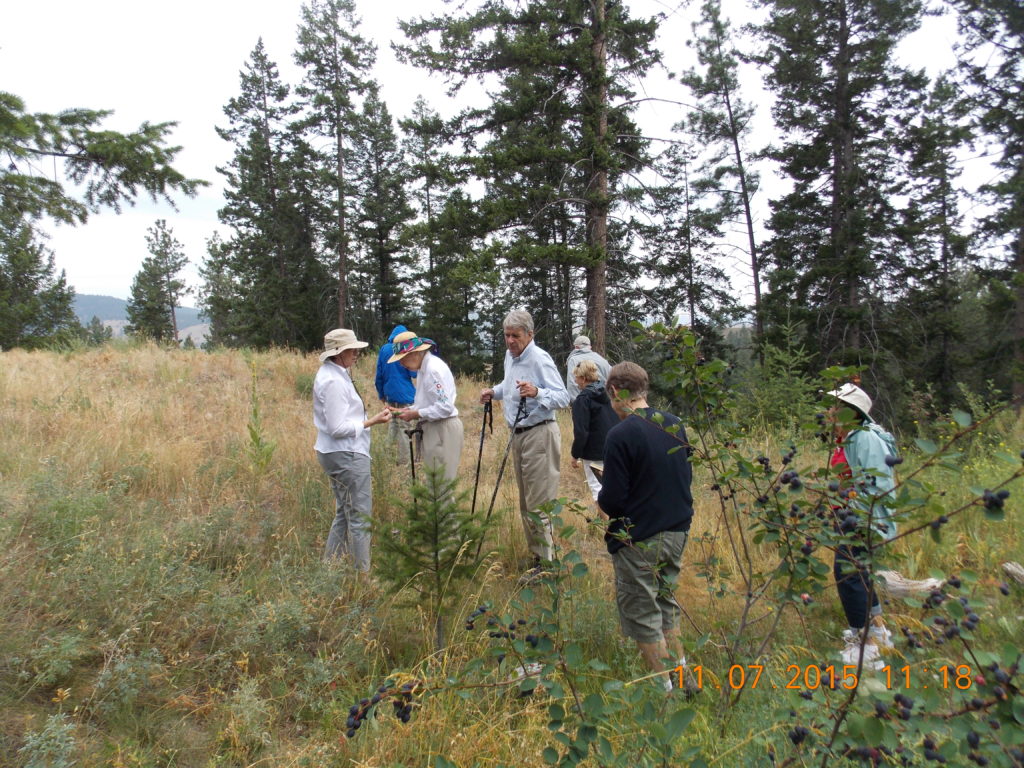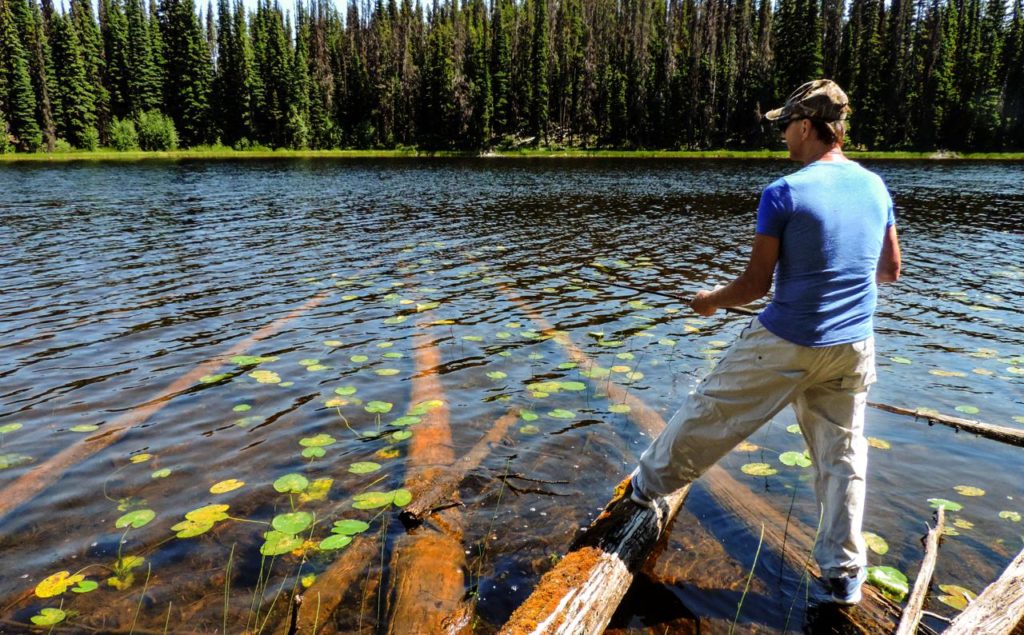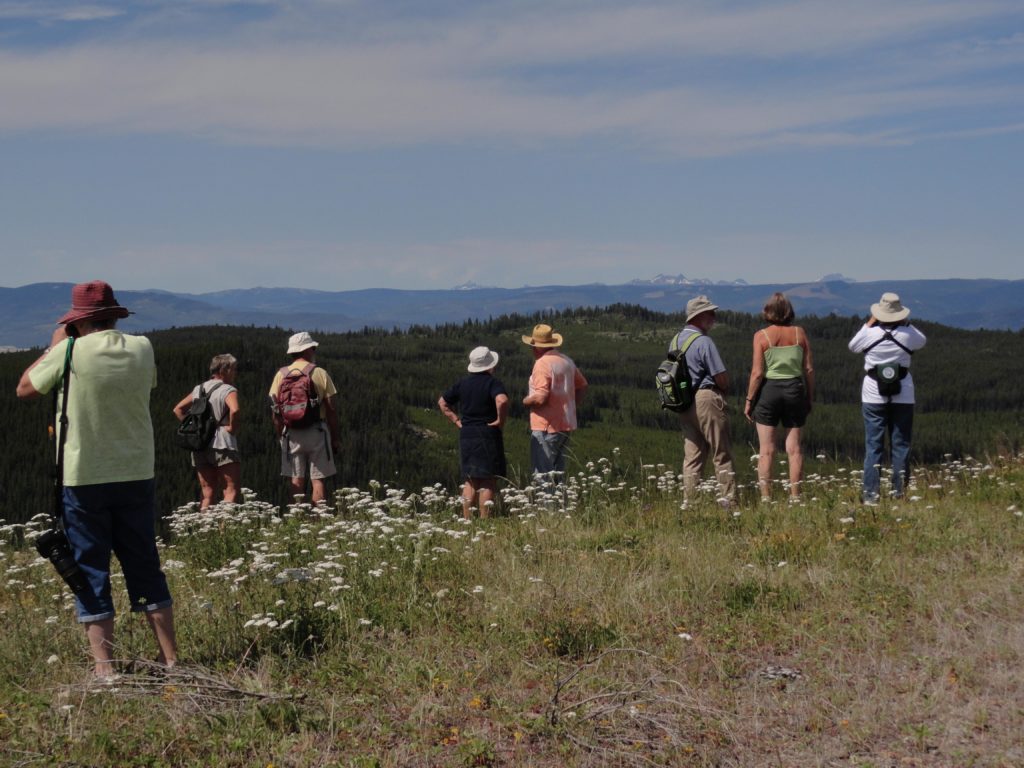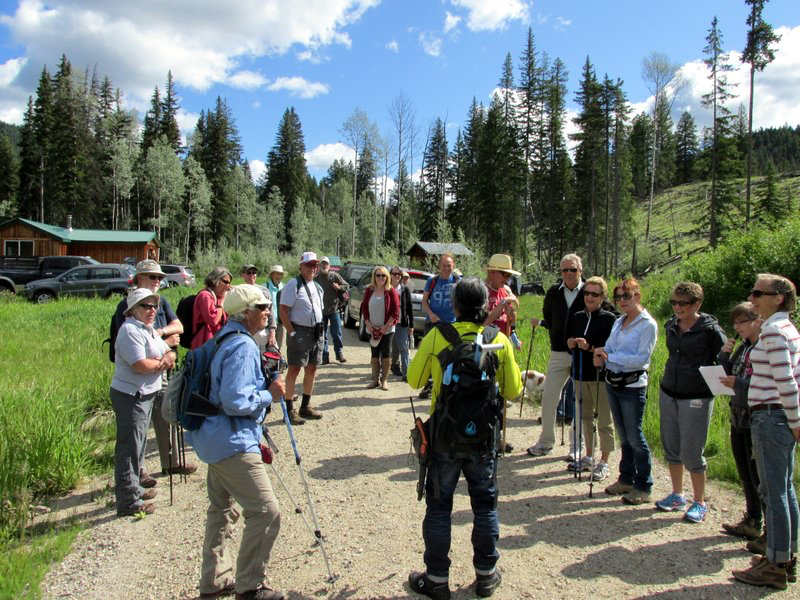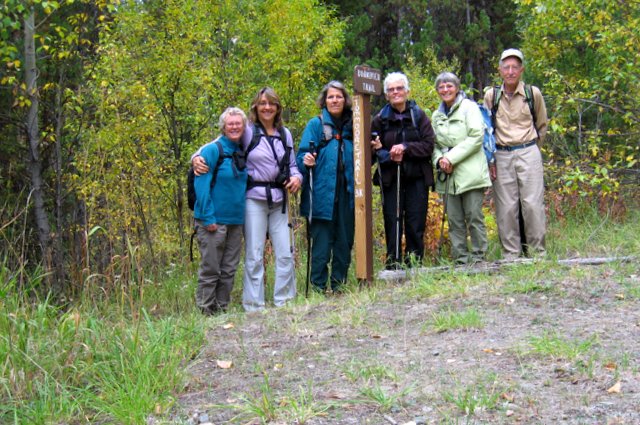
Vermilion Forks Field Naturalists hosted yet another successful hike on Saturday, September 19th, when Charlotte Sellers led a group of six along a portion of the Bonnevier trail in Manning Park. After an hour’s drive from Princeton, the group arrived at the Tom Moore trail, a path which intersects with the Bonnevier trail, halfway up to a ridge. Bonnevier trail is predominantly uphill through forest, with grasslands and fallen trees, but well maintained as it is part of the Fat Dog race every year. Two hours of hiking took the group to the ridge – time for lunch and a rest. Although there were squalls throughout the valley, there was no rain, and there were glimpses of the mountains through breaks in the clouds on the return journey, not to mention the brilliantly hued fall colours being exhibited in the park right now! A special guest on this trek was former Princeton resident, Lynn Smith, visiting from Australia.



